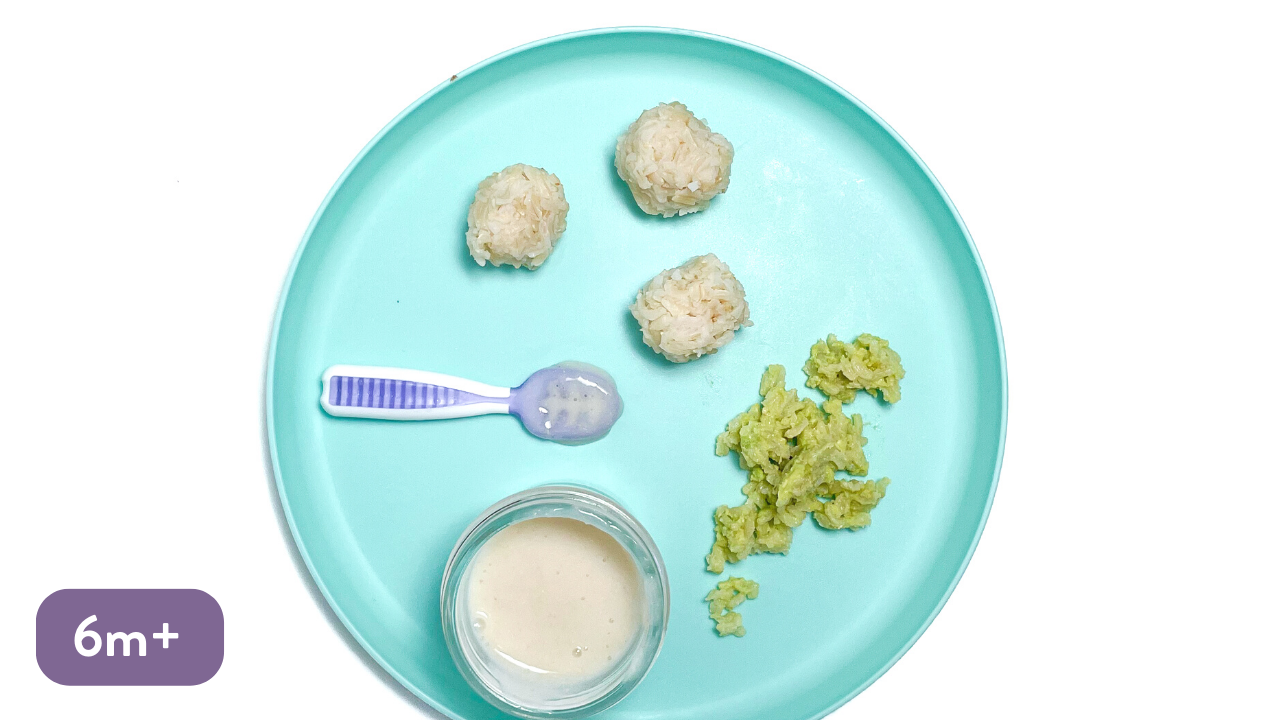
Rice for Self Feeding
Rice can be served to your baby, whether for baby-led weaning, which happens around 6 months of age, or during the finger foods stage at 9 months.
- 6+ months - Whole, Rice Balls: Rice balls are great for younger babies as they will have an easier time picking up the balls with their palmar grasp. You can also serve rice with a sauce, butter or avocado to make it easier for your baby to swallow.
- 9+ months - Rice Balls, In Sauce: You can put rice in a bowl with sauce, butter or avocado to help your baby self-feed.
- 12+ months - In Sauce: Toddlers can really eat rice in any form at this point. You may want to serve it with a fork or spoon to give baby practice with utensils.
Rice Balls for Self-Feeding
Prep Time: 5 minutes
Cook Time: 0 minutes
Servings: 1-2 servings
Age: 6+ months
Ingredients
- 1/2 cup cooked brown rice
Instructions
-
Let cooked rice cool.
-
Take a tablespoon of rice and gently press the rice grains together and then roll them into a ball. If the rice is sticking to your hands, lightly coat them in warm water with a little olive oil.
- Repeat until you have enough rice calls.
For Avocado Rice, mix together 1/4 cup of rice and 1/4 of mashed avocado.
Notes
Age: 6+ months
Yield: 1-2 portions for baby
Storage: rice balls can be stored in an air-tight container in the fridge for up to 3 days.
Puree for Self-Feeding: Yes, it can be done! You can offer purees and still allow your baby to lead the way with self-feeding.
- Place a few spoonfuls of purees directly on the tray or in a bowl for your baby to dip fingers into. Model how to dip your fingers into the puree and bring them to your mouth, to taste some.
- Offer your baby a pre-loaded self-feeding utensil and hold it out for them to grasp or set on their tray.
- Use a solid food as a dipper. You can also offer a soft stick-shaped piece of food, such as a soft roasted carrot or bread lightly toasted and cut into strips to dip into the puree.
Nutritional Information
There are so many different types of rice so the nutritional content really depends on the type of rice and how it is processed.
- Whole grain rices, like brown rice and wild rice, will be higher in fiber and vitamins and minerals, like iron, B vitamins and magnesium.
- White rice will not have much fiber or as many vitamins and minerals, unless it has been enriched, which just means nutrients have been added back. Read the label to find out if it has been enriched.
- All rice is a good source of carbohydrates, which are necessary for energy.
- Unfortunately, all rice, even organic and whole grain rice, is susceptible to absorbing the metal arsenic from the ground it is grown in, which is can be toxic when too much is ingested.

